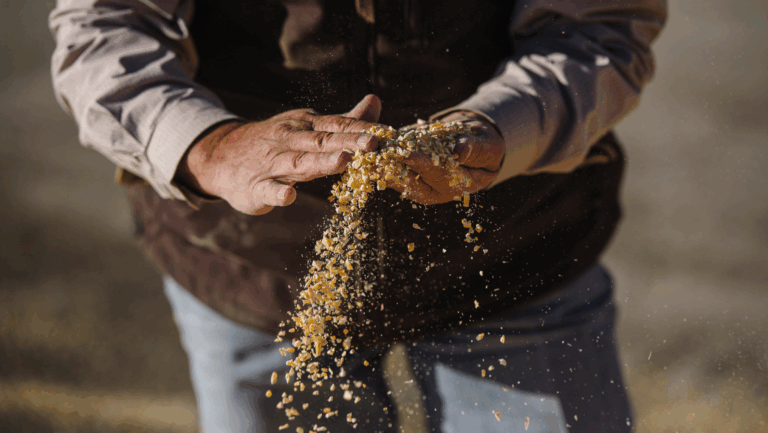How MAHA Could Reshape U.S. Food Policy and Agriculture
Food policy in America is changing—creating opportunities for some farmers and headaches for others.
The rise of the Make America Healthy Again (MAHA) movement is signaling a major shift in U.S. food policy and how Americans view the intersection of agriculture, health, and regulatory oversight.
At the heart of MAHA movement is a growing belief that nutrition—not pharmaceuticals—holds the key to reversing the nation’s chronic disease trends. For consumers, this once grassroots movement has generated abrupt shifts in demand. MAHA-minded shoppers are now seeking affordable food options free of ingredients like artificial dyes, seed oils, and high fructose corn syrups.
The implications of MAHA are complex for producers and the future of food policy. They encompass new risks, revenue opportunities, and a rethinking of what it means to feed the nation.
What Is the MAHA Movement?
The MAHA movement began gaining momentum in 2023, during Robert F. Kennedy Jr.’s presidential campaign and continued to build as he transitioned into his role as Health Secretary in early 2025. While Kennedy has long advocated for environmental and public health reforms, MAHA took shape as a formal movement in response to growing public concerns about chronic disease, food safety, and chemical exposure. The movement’s institutional backing came with the creation of the MAHA Commission in February 2025.
The goal of the MAHA Commission is to study the causes of chronic disease and chart a new path forward that prioritizes preventative care through nutrition. Its focus on nutrition makes agriculture a key component of the discussion. This has created tension at times between agriculture and MAHA enthusiasts. Major farm groups have closely followed the movement, speaking out against commentary that could negatively impact the way many U.S. farms operate.
But according to MAHA leaders, they understand the vital role of American agriculture and claim change should involve collaboration over coercion.
“We need to transition without mandates, without coercion. We need to give off-ramps to farmers so they can shift to regenerative or biodynamic practices in a way that maintains the vibrancy of their farms and rural communities.”
– Robert Kennedy Jr.
Whether you support it or not, the MAHA movement is gaining momentum, influencing consumer demand, and advising federal food policy. In this article, we break down the potential risks and opportunities it presents for the U.S. farm community to help operators prepare for what’s ahead.
Risks MAHA Poses for U.S. Food Policy and Agriculture
Many in agriculture were concerned by the first MAHA report, which raised questions about pesticides like glyphosate and atrazine and expressed skepticism about ingredients such as seed oils, high-fructose corn syrup, and artificial dyes. While many in the wellness community welcomed the scrutiny, ag groups responded with sharp criticism.
“The Make America Healthy Again Report is filled with fear-based rather than science-based information about pesticides.”
– Statement from the National Corn Growers Association
In fact, after its release, more than 300 ag organizations urged USDA, EPA, and HHS to ground future policies in sound science and consult farmers on operational impact before making rash regulatory decisions.
The message from the farm community was clear—excluding farmers from the MAHA table could jeopardize not just livelihoods, but the integrity of America’s food supply.
Market Disruption
One example of market disruption caused by the MAHA movement’s impact on food policy is the potential removal of high-fructose corn syrup (HFCS) from mainstream food and beverage products. Although HFCS accounts for less than three percent of total U.S. corn usage, such a shift could have reverberating consequences that reduce corn prices by as much as 34 cents per bushel, according to a report released by the Corn Refiners Association. This estimate would amount to more than $5 billion in lost revenue for U.S. corn producers.
Input Restrictions
MAHA-related regulatory reforms could target inputs like synthetic pesticides, fertilizers, antibiotics, or GMOs—either through regulation or economic incentives. While this could open new markets for some producers who are already limiting or avoiding these inputs altogether, it could increase costs and reduce flexibility for others, especially in regions where pest pressure or soil constraints limit alternative options. Lower production rates and yields could strain supplies, increasing costs or even availability for consumers. It could also make domestic producers less competitive in the global market and increase U.S. reliance on ag imports.
Compliance Requirements
If farm subsidies or conservation funding become tied to MAHA-aligned benchmarks (like pesticide-free or low-emission practices), producers not meeting those standards may be at a disadvantage—even if their practices are currently legal and sustainable. This could negatively impact their ability to access federal programs to support their operations.
Cost of Production
Depending on how consumer preferences and regulatory mandates shift, the cost of agricultural production could rise even more than it already has. For farmers already operating on tight margins, these added expenses often translate to higher prices at the grocery store. We’ve already seen this dynamic play out under California’s Proposition 12, which has led to an estimated 20 percent jump in pork prices and decline in consumption statewide since enactment.
Opportunities in Food as Medicine and the Future of Farming
While the MAHA movement presents regulatory risk depending on the direction it takes, it also creates new market opportunity—especially for producers of fresh, local, and nutrient-dense food. A key pillar of MAHA is the growing “Food is Medicine” initiative, which aims to integrate medically tailored groceries, fresh produce prescriptions, and food-based health interventions into the U.S. healthcare system.
After criticism over a lack of farmer input in the initial MAHA report, the administration promised to involve producers more closely moving forward. Deputy Agriculture Secretary Stephen Vaden assured stakeholders that U.S. ag would have “a strong voice” in the second MAHA report and emphasized a focus on putting more U.S.-grown food on American plates.
“We have the most efficient, the most sustainable, and the safest food supply the world has ever seen. Making America healthy begins with making what’s on America’s plate American again.”
– Stephen Vaden
And it seems ag group concerns were indeed heard. The second MAHA commission strategy report highlights the need for research and support for precision ag technology adoption and avoids any proposal restricting pesticide use. Other food policy recommendations in the MAHA report could impact U.S. producers in the following ways:
- More milk options: Farmers, especially small dairies, could sell whole milk and other products directly to local customers.
- Support for small dairies: Eases rules so family-run dairies can process and market their own milk.
- New local markets: Mobile grocery units would expand access to farm products in underserved areas.
- Faster store approvals: Quicker permits for grocery stores could create new outlets for local produce.
- Stronger produce demand: Incentives for grocers mean more steady sales of fresh, frozen, canned, and dried fruits and vegetables.
- Streamlined organic certification: Simplified organic certification processes could incentivize and help reduce costs for small farms transitioning to organic practices.
Collaboration Over Coercion
This renewed emphasis on domestic sourcing could lead to greater institutional demand for U.S.-produced specialty crops, grass-fed meats, and organically certified foods. Rather than defaulting to restrictive mandates, MAHA leadership is prioritizing public-private partnerships, soil health incentives, and ag tech adoption to reach nutrition and environmental goals.
Trading Pharma for the Farm
The principle of food as medicine in the MAHA movement argues that for every $1 invested in medically tailored meals, an estimated $3 is saved in healthcare costs. Should this concept gain traction within food policy, new value chains could form between healthcare systems, insurers, and producers.
“The quickest way to get patients out of the doctor’s office is to prescribe pills, but this only manages the disease. If you invest upfront in food as medicine, you reduce disease in the population, which makes a healthier society while also reducing stress on medical institutions.”
– Dr. Robert Graham
If “prescription produce” programs expand, farmers could gain access to stable, contract-based income through institutions participating in pilot programs. For producers, this could also open new revenue streams in the form of Medicaid waivers “prescribing” produce or an increase in direct consumer sales through mobile platforms like Red Hen.
Revenue Opportunities
If the “MAHA effect” on U.S. food policy and consumer preferences is here to stay, that would likely drive greater demand for products consumers see as regenerative, organic, and sustainably grown. This could give a competitive edge to producers already operating under those models. The controlled environment agriculture (CEA) sector may also see expanded demand as the need for year-round, nutritionally diverse fresh food increases.
Government Funding Initiatives
Expanded funding for voluntary conservation programs like EQIP and CSP through the One Big Beautiful Bil could give producers who want to explore regenerative practices—such as cover cropping, rotational grazing, or diversified crop rotations—the financial support to make it possible. Programs like the Organic Transition Initiative were also expanded through the megabill to help more producers offset the cost and complexity of certification.
Ag Secretary Brooke Rollins’ close work with Health Secretary Kennedy indicates more USDA programs could emerge to support farmers should food policy change.
“Making America Healthy Again starts with supporting America’s farmers and ranchers.”
– Brooke Rollins
Stay Ahead of the Food Policy Curve with AgAmerica
Whether you’re for it or against it, MAHA has the potential to be a defining moment for U.S. food policy and agriculture should not only be paying close attention, but be at the forefront of the discussion. While there are risks, producers who stay informed and adaptable will be better positioned to capitalize on the opportunities ahead.
If you’re navigating operational shifts or planning for the future, work with a lender who understands what’s at stake. We’re an independent private lender, dedicated solely to agricultural land finance, because we know American farmers need financing that can keep pace with them.
Sign up for our newsletter at the bottom of the page to stay informed on the latest food policy developments.
If you’re interested in exploring financing solutions to support your operation’s evolution, contact us today.






